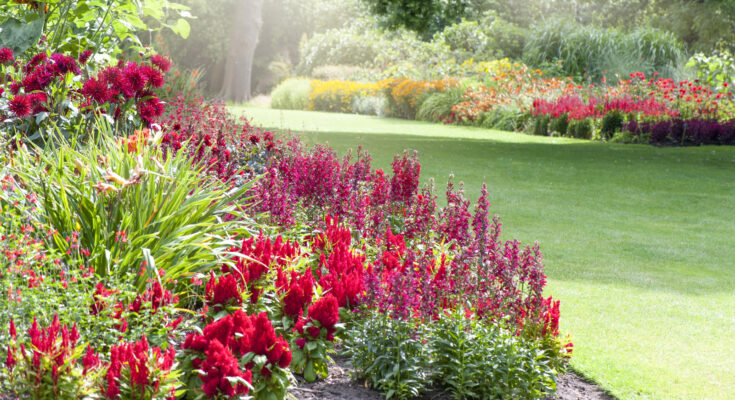The Red Summer Flower That’ll Make Your Yard A Hummingbird & Pollinator Paradise
Have you wondered why hummingbird feeders are usually red? It’s because red flowers often signal that the nectar will be an especially good source of energy for the tiny birds. They also like tubular or bell-shaped flowers, so when you’re looking for plants that will fill your yard with hummingbirds, these features are useful. The Maltese cross (Silene chalcedonica) will fit the bill for anyone looking to turn their yard into a pollinator paradise.
Native to cold regions like Siberia, it’s safe to say Maltese cross is cold hardy. In fact, this perennial grows well in USDA Zones 3 through 9. Its brightly colored flowers attract more than just hummingbirds. Bees and butterflies love it too. At 3 to 4 feet tall, these upright flowers bloom in June and July atop tall stalks that may bend in the wind. Deadheading may help prolong the bloom period, but these are relatively low-maintenance plants.
Because Maltese cross may be done flowering by mid-summer, you will want to interplant them in beds with more seasonal color. They can work well as an addition to cottage gardens, pollinator gardens, or perennial beds — just keep in mind that they like moist soil and full sun. In their native range, they are often found growing in moist meadows and ravines, but they also like well-drained soil. Relatively disease-free, aphids and slugs like this plant, so you may want to brush up on how to get rid of aphids.
Flowers to pair with Maltese cross to attract more pollinators
If your goal is a pollinator paradise where you can see hummingbirds flitting from flower to flower, you will want to add a variety of plants to keep them coming back all season long. Cardinal flower (Lobelia cardinalis) can handle full sun and a range of soil conditions, including moist areas, which makes it a good fit for beds with Maltese cross, also hardy in zones 3 through 9. Growing up to 5 feet tall, it blooms in late summer and fall, meaning it can take over when your Maltese cross is done flowering. You can even grow cardinal flowers from seed.
Scarlet sage (Salvia coccinea) is another great option, especially if you’re fully embracing red in your garden. Pollinators, including hummingbirds, love this southwest native that thrives in zones 8 through 10 and grows as an annual in colder climates. It’s known for being drought-tolerant, but you will get more blooms when it’s well watered. Those flowers will last from early summer until the first frost, so they can keep your hummingbirds happy in transition periods. Learn more about enticing hummingbirds to your yard with this gorgeous red flower.



